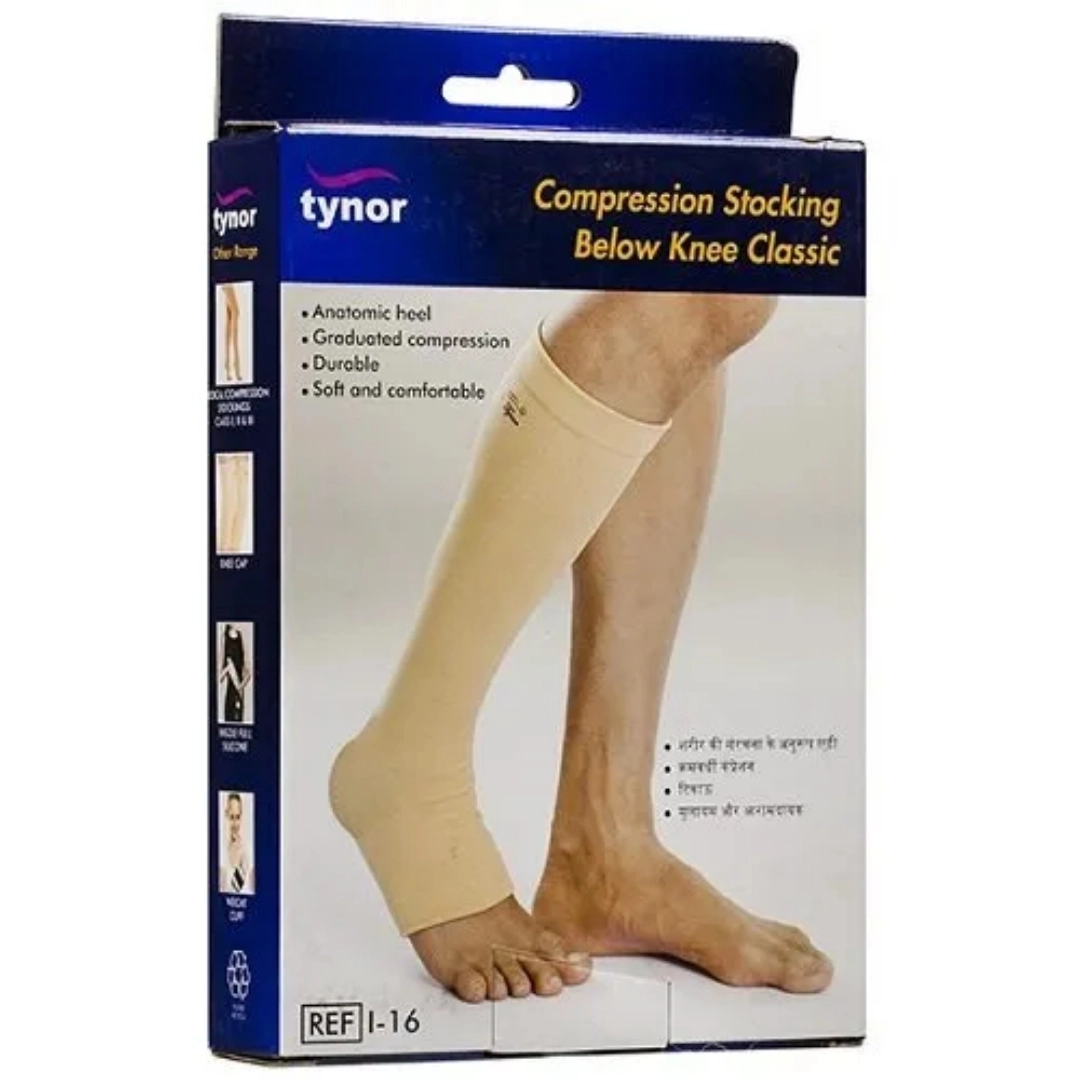Tynor Below Knee Compression Stockings (XL)
Category : Orthopaedic Supplies
SKU : 20283
Brand : Tynor5 Rating & 5 Reviews

651MRP 930Get (30% OFF)
11 Orders Already Shipped till Now

Tynor Below Knee Compression Stockings (XL)
Purchase item in bulk quantity
Get at best price for your business
Highlights:
- Product Name: Tynor Below Knee Compression Stockings
- Generic Name: Flight Socks
- Brand: Tynor
- Size: XL (16.0 -18.5 inch)(40.6 - 46.9 cms)
- Colour: Beige
- Material: High-Quality, Breathable Fabric
- Net Quantity: 1 Pair
Surginatal Benefits
Return & Warranty Policy
View PolicyDescription:
Sold and Fulfilled by Surginatal




















